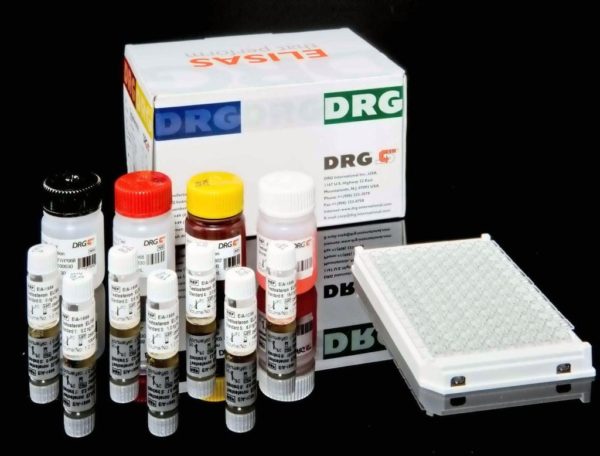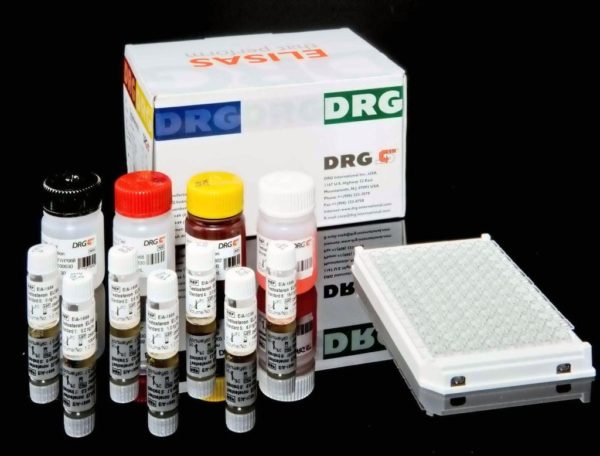Description
Hepcidin 25 (bioactive) HS ELISA is a high sensitive enzyme immunoassay for the quantitative measurement of Hepcidin-25 in serum or plasma.
- Hepcidin is an iron homoeostasis regulator peptide. The bioactive peptide Hepcidin-25 is generated predominantly in the liver by proteolytic cleavage of the C-terminal 25 amino acids of prohepcidin (1). Subsequent N-terminal processing of Hepcidin-25 results in smaller peptides of 20-24 amino acids that show greatly reduced activity and accumulate in the urine (2). Although originally identified as antimicrobial peptide (3), Hepcidin-25 is now established as a major regulator of dietary iron absorption and cellular iron release (4).
- Hepcidin exerts its regulatory function by counteracting the function of ferroportin, the major cellular iron exporter in the membrane of macrophages, hepatocytes, and the basolateral site of enterocytes. Hepcidin-25 induces the internalization and degradation of ferroportin, resulting in increased intracellular iron stores, decreased dietary iron absorption, and decreased circulating iron concentrations (5). Hepatocellular hepcidin synthesis decreases under conditions of increased demand for circulating iron like iron deficiency, hypoxia, anemia, and erythropoiesis. In contrast, hepcidin synthesis is induced by inflammation and infection (6). Serum Hepcidin-25 has been shown to add value to identify and differentiate specific disease conditions.
- Hepcidin deficiency causes hereditary hemochromatosis, characterized by body iron overload that may progress to liver cirrhosis (7). In addition, low Hepcidin-25 concentration can be induced by iron loading anemias (8) and chronic hepatitis C (9). In contrast, high Hepcidin-25 levels have been found in iron-refractory iron-deficiency anemia (10), during infection, chronic kidney disease (11), and after intensive exercise, explaining the high iron deficiency among athletes (12).
- The DRG Hepcidin 25 (bioactive) HS ELISA Kit is a solid phase enzyme-linked immunosorbent assay (ELISA) based on the principle of competitive binding. The microtiter wells are coated with a monoclonal (mouse) antibody directed towards an antigenic site of the Hepcidin-25 molecule. Endogenous Hepcidin-25 of a patient sample competes with a Hepcidin-25-biotin conjugate (Enzyme Conjugate) for binding to the coated antibody. After incubation the microtiter plate is washed to stop the competition reaction.
- In the following incubation the bound biotin molecules are detected with streptavidin peroxidase (Enzyme Complex). After incubation the plate is washed the second time. After addition of the substrate solution, the intensity of colour developed is inversely proportional to the concentration of Hepcidin-25 in the patient sample.




